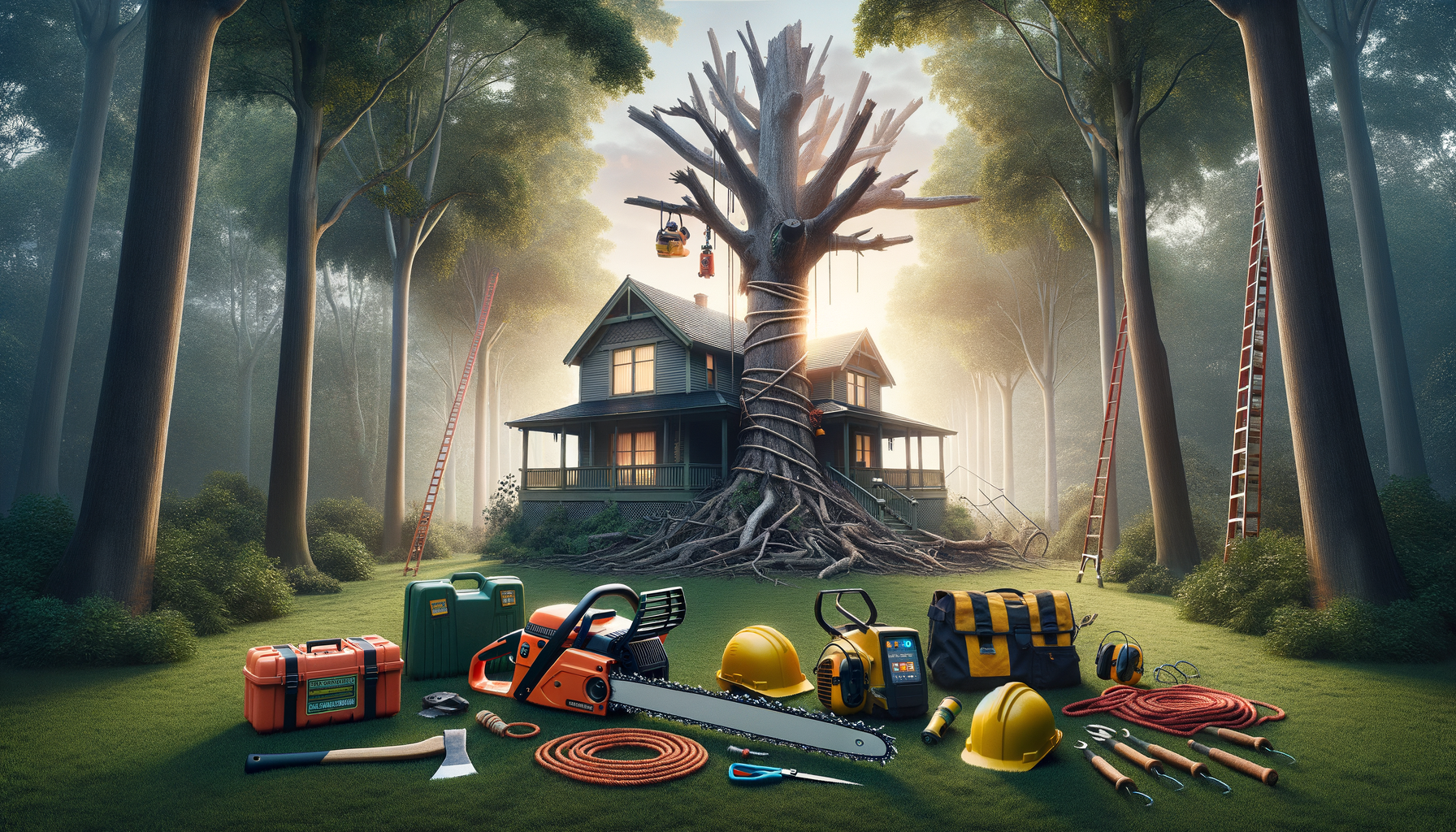Understanding Tree Clearing: An Overview
Tree clearing is a significant activity that involves the removal of trees and vegetation from a specific area. This process is often necessary for various reasons, such as preparing land for agricultural use, construction projects, or restoring ecological balance in certain habitats. However, tree clearing is not a task to be taken lightly, as it requires careful consideration of safety, appropriate equipment, and potential impacts on property and the environment.
The importance of tree clearing lies in its ability to facilitate development and land use changes. For instance, in agriculture, clearing land can increase arable space, allowing for larger crop production. In urban development, it makes way for new infrastructure, such as roads and buildings. However, these benefits come with responsibilities, including ensuring safety during the clearing process and minimizing negative impacts on the surrounding environment.
Tree clearing involves various techniques, ranging from manual removal using chainsaws to more advanced methods like using heavy machinery. Each method has its pros and cons, depending on the scale of the project and the type of vegetation involved. Careful planning and execution are essential to ensure that tree clearing is done efficiently and responsibly.
Safety Considerations in Tree Clearing
Safety is paramount in any tree clearing operation. The process involves potential hazards, such as falling trees, operating heavy machinery, and working in challenging environmental conditions. Therefore, it is crucial to adhere to safety protocols to protect workers and the surrounding community.
Key safety measures include:
- Conducting a thorough site assessment to identify potential risks and hazards.
- Ensuring that all personnel are properly trained and equipped with the necessary protective gear, such as helmets, gloves, and safety boots.
- Using appropriate signage and barriers to keep unauthorized individuals away from the worksite.
- Implementing emergency response plans in case of accidents or unforeseen events.
Additionally, regular safety briefings and inspections can help maintain a safe working environment. By prioritizing safety, tree clearing operations can be conducted efficiently while minimizing the risk of injury or damage.
Equipment Used in Tree Clearing
The choice of equipment in tree clearing plays a vital role in the efficiency and success of the operation. Depending on the project’s scale and complexity, different tools and machinery may be employed to achieve the desired outcome.
Common equipment used in tree clearing includes:
- Chainsaws: Ideal for cutting down smaller trees and branches, offering precision and maneuverability.
- Bulldozers: Useful for clearing large areas of vegetation and moving heavy debris.
- Excavators: Equipped with attachments like mulchers or grinders, they can handle larger trees and stumps.
- Wood chippers: Essential for processing felled trees and branches into mulch or wood chips.
Each piece of equipment has specific advantages, and selecting the right combination is crucial for optimizing productivity and reducing environmental impact. Proper maintenance and operation of these machines are also essential to prevent breakdowns and ensure the safety of operators.
Impact on Property and Environment
Tree clearing can have significant impacts on both property and the environment. It’s essential to consider these effects to ensure that the benefits outweigh any potential drawbacks.
On the property side, clearing trees can enhance land value by making it more usable and accessible. It can also improve aesthetics and reduce the risk of wildfires by removing excess vegetation. However, improper tree clearing can lead to soil erosion, decreased biodiversity, and altered water flow patterns, which may negatively affect the land’s long-term viability.
Environmentally, tree clearing must be balanced with conservation efforts. Trees play a crucial role in carbon sequestration, habitat provision, and maintaining ecological balance. Therefore, responsible tree clearing practices should involve measures such as:
- Retaining buffer zones of vegetation to protect waterways and wildlife habitats.
- Implementing reforestation or afforestation projects to replace removed trees.
- Minimizing soil disturbance to prevent erosion and preserve soil health.
By considering these factors, tree clearing can be conducted in a way that supports both property development and environmental sustainability.
Conclusion: Balancing Needs and Responsibilities
Tree clearing is a necessary and often beneficial activity that supports various land use goals. However, it comes with a set of responsibilities to ensure safety, choose the right equipment, and mitigate impacts on property and the environment. By understanding the complexities involved and adhering to best practices, landowners and developers can achieve their objectives while contributing to sustainable land management.
Ultimately, the key to successful tree clearing lies in balancing immediate needs with long-term responsibilities. By doing so, we can ensure that our actions today do not compromise the well-being of future generations.




Leave a Reply